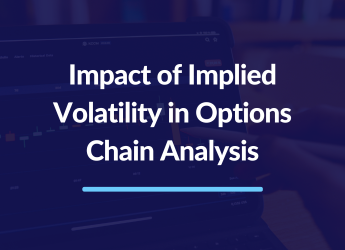Open interest and volume are two essential metrics that traders use to measure the activity and liquidity of an options market. Understanding the relationship between open interest and volume can provide valuable insights into the current market conditions and help traders make informed trading decisions.
What is Open Interest?
Open interest (OI) is an indicator used to gauge activity in the options and futures markets. It tells of the total number of contracts still in effect but has not yet been purchased, sold, or exercised.
As it offers essential information about the degree of activity and liquidity in the options and futures markets, open interest is a crucial statistic for traders and investors to track. It measures all open contracts in the market at any given time. When open interest is rising, it means interest in a certain market is increasing, whereas when it is falling, it means that interest in the market is decreasing.
To know what open interest analysis is in detail, Click here.
What is Volume?
The volume describes the total number of option contracts exchanged on a particular day.
It serves as a gauge of the short-term activity in the options market and shows how much demand there is for options. When the short-term market is more active, larger the volume will be.
Relationship between Open Interest and Volume
Volume counts the number of trades made during a certain time period, whereas open interest counts the number of open positions. In addition, open interest gives an idea about the market’s liquidity, while volume gives an idea about the market’s demand.
Options traders must comprehend the relationship between open interest and volume. It is more probable that there will be strong liquidity in a market with high open interest and volume, making it simpler for traders to initiate and exit deals.
On the other end of the spectrum, trade could be more challenging, as the market might be less liquid with low open interest and volume.
It is also crucial to remember that variations in OI and volume might reveal vital clues about the market’s direction. The market becomes bullish when there is a growing open Interest and rising volume. On the other hand, it becomes bearish with falling open interest and falling volume.
Traders can use OI and volume to spot prospective trading opportunities. It determines the risk level associated with a deal. As an illustration, options with high open interest and volume are typically considered safer bets than options with low open interest and volume since the former are more likely to have higher liquidity and lower price volatility.
5 Distinctive Relationships Between Open Interest And Volume

1. Market Activity
Open interest and volume are both measures of market activity in the options market. Therefore, High levels of OI and volume indicate a high level of interest and activity in the market. In contrast, low levels of OI and volume indicate a less active market.
2. Liquidity
High open interest and volume levels often signify a very liquid market. Hence, it makes it simpler for traders to join and exit trades. Low open interest and volume levels might signify a less liquid market. Thus making it difficult to trade.
3. Market Direction
The relationship between OI and volume can also provide insights into the market’s direction. The market is bullish, with rising open interest and rising volume. And it goes without saying that it is considered bearish on the other end of the spectrum.
4. Price Volatility
Volume and open interest affect how volatile prices are in the options market. Greater liquidity and fewer price gaps in the market result in lower levels of price volatility. On the other side, low OI and volume may lead to higher levels of price volatility since the market is less liquid and has wider price gaps.
5. Option Contract Valuation
Volume and open interest play significant roles in option contract pricing. The more open interest and volume there are, the more valuable the option contract is. This occurs as there is greater market liquidity and a higher likelihood of a trade.
Conclusion
In conclusion, options traders must comprehend the relationship between OI and volume. It offers insightful data on the activity and liquidity of the options market. It can guide traders in making wise trading choices. Traders may better comprehend the market and increase their chances of success by keeping an eye on open interest and volume. Understand more about OI and Volume with Stolo OI Analysis Tool.

